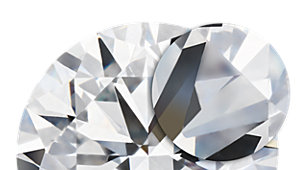There are no articles in this category. If subcategories display on this page, they may contain articles.
Cut Article Count: 1
Buying Tips
Cut is the most important of the 4Cs because it has the greatest influence on a diamond's sparkle.
Even if a diamond has a perfect clarity and color grade, if it has a poor cut, it may appear dull.
When a diamond is cut with the proper proportions, light is returned out of the top of the diamond (which gemologists refer to as the table). If it is cut too shallow, light leaks out of the bottom; too deep and it escapes out of the side.
To maximize your budget, choose the highest diamond cut grade your budget allows. We suggest a cut grade of Very Good or better.

Grading Scale
Less Than 1%
Astor by Blue Nile™
Every Astor by Blue Nile™ Diamond is cut to gather and reflect the most light possible. Light performance is measured by three factors: brilliance, fire and sparkle. Fewer than 15 out of every 10,000 diamonds qualify as an Astor by Blue Nile™ diamond.
See Astor by Blue Nile™ DiamondsTop 3%
Ideal Cut
This rare cut represents roughly the top 3% of diamond cut quality. It reflects most light that enters the diamond.
See Ideal Cut DiamondsTop 15%
Very Good Cut
This cut represents roughly the top 15% of diamond cut quality. It reflects nearly as much light as the ideal cut, but for a lower price.
See Very Good Cut DiamondsTop 25%
Good Cut
This cut represents roughly the top 25% of diamond cut quality. It reflects most light that enters, but not as much as a Very Good cut grade.
See Good Cut DiamondsTop 35%
Poor/Fair Cut
Represents roughly the top 35% of diamond cut quality. These diamonds tend to appear dull or glassy.
Low grade not offered by Blue Nile.
More Expert Tips
- For the best possible cut, consider Astor by Blue Nile™. Only diamonds with the highest brilliance, fire, and sparkle are considered as an Astor by Blue Nile™ diamond. Each diamond is graded by both the Gemological Institute of America and GemEx to guarantee its quality and sparkle.
- Diamonds with a cut grade of good or very good represent an excellent combination of beauty and value.
- To learn more about cut see, Diamond Anatomy.
Color Article Count: 1
Clarity Article Count: 1
Diamond Clarity
Buying Tips
- Most diamonds have tiny imperfections called inclusions.
- The fewer and less visible the inclusions, the higher the clarity grade.
- Diamond clarity is often the least important of the 4Cs because most inclusions are microscopic; they don’t affect the diamond’s beauty in a visible way.
- To maximize your budget, consider an "Eye-Clean" diamond, graded VS1 or higher, in which inclusions are invisible to the naked eye.
Grading Scale
FL & IF
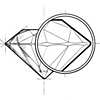
Flawless, Internally Flawless
Under 10x magnification, inclusions are not visible, rarest clarity grade.
See FL & IF Graded Diamonds- FL: No visible blemishes, <1% of diamonds
- IF: Very slight blemishes, <3% of diamonds
VVS1, VVS2

Very, Very Slightly Included
Characteristics miniscule and difficult to see under 10x magnification, even to a trained eye.
See VVS Graded Diamonds- VVS1: Few miniscule inclusions
- VVS2: Slightly more miniscule inclusions
VS1, VS2
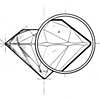
Very Slightly Included
Minor inclusions ranging from difficult to somewhat easy to see at 10x magnification.
See VS Graded Diamonds- VS1: Difficult to see minor inclusions
- VS2: Somewhat easier to see minor inclusions
SI1, SI2
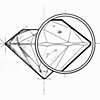
Slightly Included
Inclusions noticeable at 10x. Best value. SI2 inclusions may be detectable to a discerning unaided eye.
See SI Graded Diamonds- SI1: Inclusions occasionally visible to the keen eye without magnification
- SI2: Inclusions typically visible from the pavilion, and often seen from the top, without magnification
I1
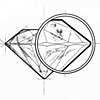
Included
Diamonds may have more obvious inclusions at 10X and may be visible to the eye. Blue Nile offers a limited selection of jewelry with I1 clarity diamonds..
See Diamond Jewelry- I1: Loose diamonds of this grade not offered by Blue Nile
I2, I3
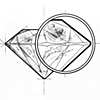
Inclusions are obvious under 10x magnification, usually visible to the unaided eye.
More Expert Tips
- Select an "eye-clean" diamond - one that has no imperfections visible to the unaided-eye through the crown. An excellent value, diamonds of this clarity are much less expensive than flawless (FL) or internally flawless (IF) diamonds, which are extremely rare and command higher prices.
- If you're considering a diamond with an SI clarity grade, call to speak to a diamond and jewelry consultant who will review the diamond to ensure the imperfections are not visible to the unaided eye.
Next, learn about Diamond Carat Weight.

